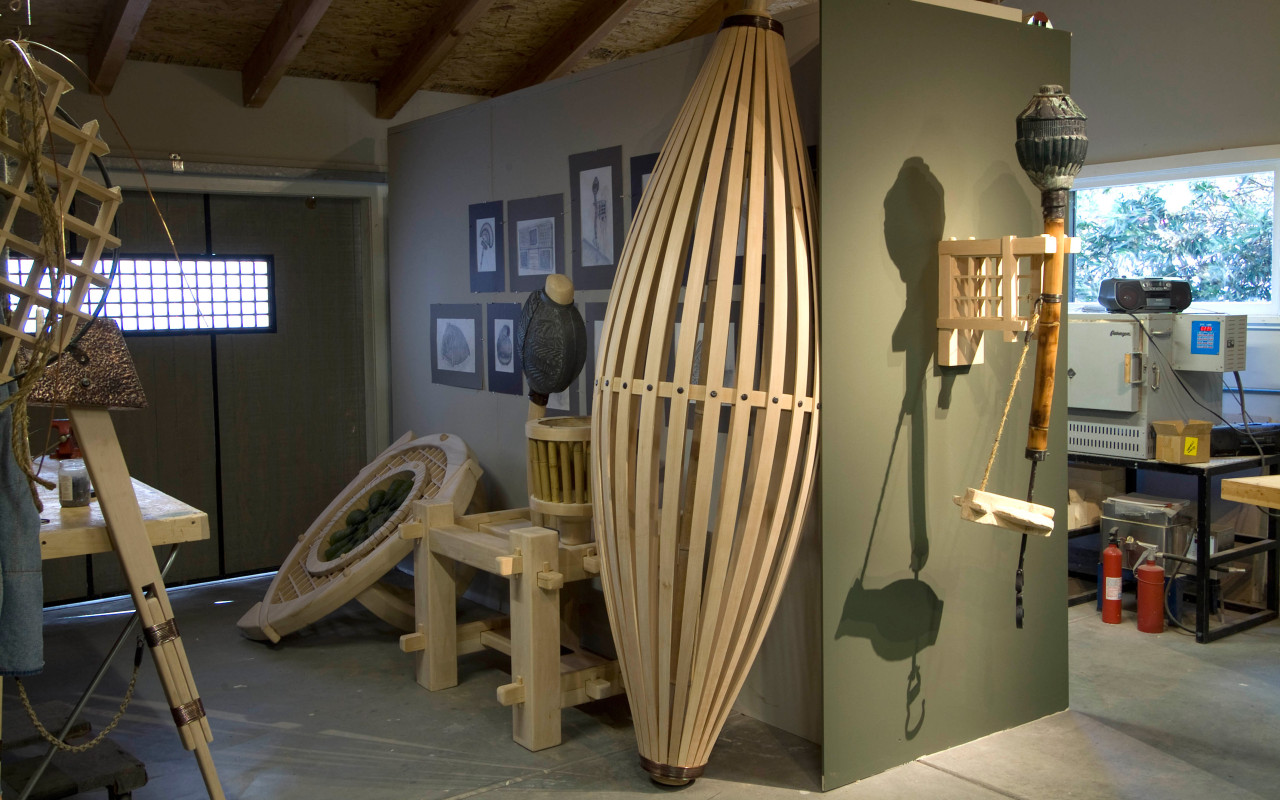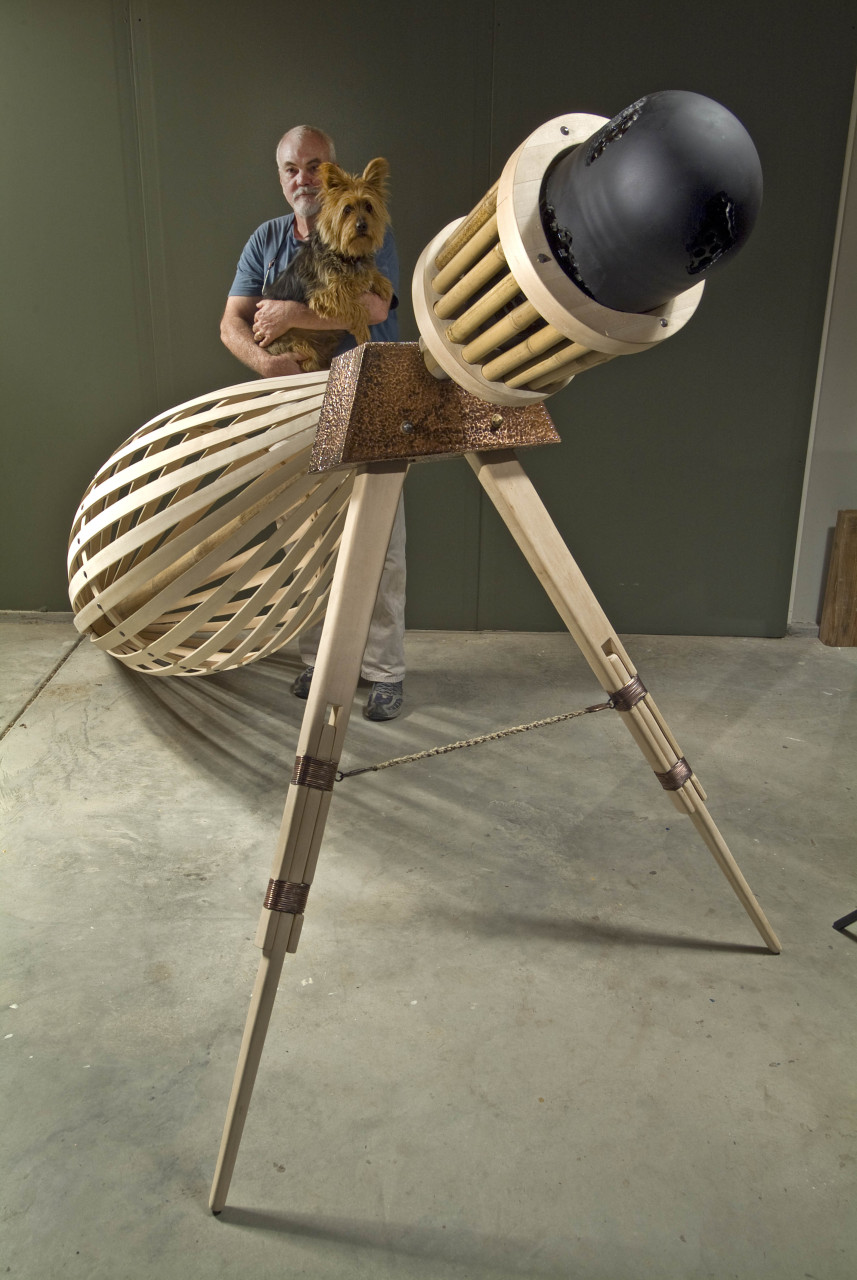John Leighton
Artist, designer, and educator, Professor Emeritus John Leighton, headed glass programs at San Francisco State University and California State University, Fullerton for a total of 37 years. He still teaches a class or two each semester at CSUF. He has been a Visiting Professor at the Tokyo Glass Art Institute and at Osaka University of Art. His work is included in many private and public collections including the National Museum of American Art of the Smithsonian Institution, the Corning Museum of Glass, the Oakland Museum, the Ebeltoft Glasmuseum in Denmark, the Lemberk Castle, in the Czech Republic, the Notojima Glass Museum, and the Kanazu Art Museum in Japan. John has twice been invited to work at the International Glass Symposium, in the Czech Republic and was awarded Honorary Lifetime Membership in the International Glass Art Society.
The subject of my work…
My sculpture is more experiential than it is narrative. It is less “about” and more “because of”. “About” implies a clarity I have never achieved. The subject of this work derives, not from my theories and presumptions, but directly from my experience.
A casual observer might say my recent work is about Japan, wood and glass. This would be only slightly accurate and a gross oversimplification. The work is made from mostly glass and wood, and I am influenced by Japanese aesthetics, especially traditional approaches to craft and how hand-made utilitarian objects are valued in Japanese culture. I’m not influenced by the objects so much as how I encountered them, and how I attempt to understand them within the context of my very western life and education. The materials, the wood, glass, metals, fibers and fasteners are the vehicles that I use to try and understand my experiences of, and travels to this mysterious culture.
I absolutely believe that looking at art requires a sincere effort on the part of the looker. So if you take your job seriously when you view this work, you may understand it in relation to the experiences, memories and feelings you might have had with similar objects; not necessarily Japanese or foreign made, but “strangely familiar” objects you may have encountered in your life.
In other words, the meaning of this work is realized only when I’m honest about my making, and sincere in my desire to learn from the process, and your willingness to view the work, without expectations, leads us to some kind of shared experience.
I’m not seeking universal symbols or truths; I am interested in making sculpture that remains viable, perhaps even poetic, as time passes. I want my work to exhibit what I have called “strange familiarity.” I hope these objects seem made without being dated. I hope this work speaks to a timeless usefulness, without being utilitarian. I don’t expect that these objects will enjoy universal understanding, but perhaps some viewers will experience that intimacy with a physical object that can stimulate pleasant memories.
Whatever they may or may not mean is beyond my influence. Whatever I have to say in my work sounds different to each listener. But it is my sincere hope that, for each of you, these sculptures are precisely what they were meant to be.
Note: I want to thank Gege Ogami for his beautiful photography.

